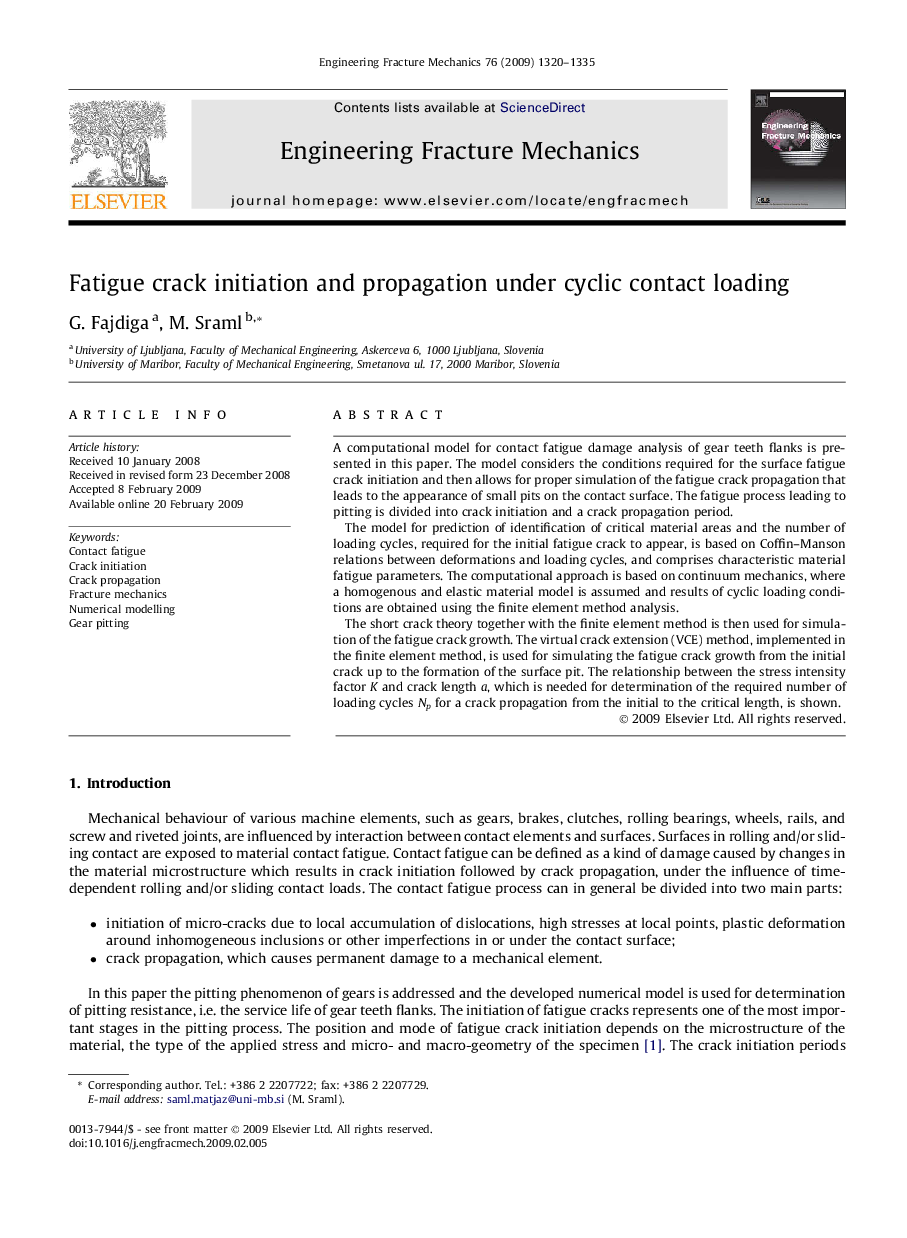| Article ID | Journal | Published Year | Pages | File Type |
|---|---|---|---|---|
| 771164 | Engineering Fracture Mechanics | 2009 | 16 Pages |
A computational model for contact fatigue damage analysis of gear teeth flanks is presented in this paper. The model considers the conditions required for the surface fatigue crack initiation and then allows for proper simulation of the fatigue crack propagation that leads to the appearance of small pits on the contact surface. The fatigue process leading to pitting is divided into crack initiation and a crack propagation period.The model for prediction of identification of critical material areas and the number of loading cycles, required for the initial fatigue crack to appear, is based on Coffin–Manson relations between deformations and loading cycles, and comprises characteristic material fatigue parameters. The computational approach is based on continuum mechanics, where a homogenous and elastic material model is assumed and results of cyclic loading conditions are obtained using the finite element method analysis.The short crack theory together with the finite element method is then used for simulation of the fatigue crack growth. The virtual crack extension (VCE) method, implemented in the finite element method, is used for simulating the fatigue crack growth from the initial crack up to the formation of the surface pit. The relationship between the stress intensity factor K and crack length a, which is needed for determination of the required number of loading cycles Np for a crack propagation from the initial to the critical length, is shown.
